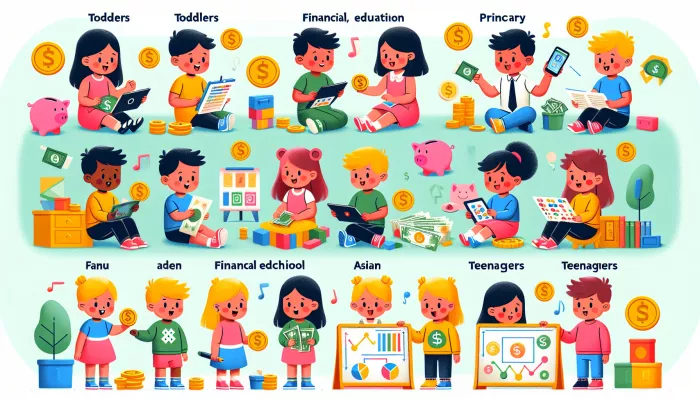
Basic financial education tools for children up to 5 years old
Financial education for children up to 5 years old is essential to establish a solid foundation on the value of money and the importance of saving.
Using tools and methods that engage in a playful way can transform complex learning into educational fun.
Check out some basic tools recommended for introducing financial concepts to young children:

Books with stories that include concepts of money, economics and value can be very effective.
Stories that show characters saving up to buy something they want, or learning to make financial choices, can inspire children to understand the value of money.
Use piggy banks It's a classic way to teach kids how to save money.
Choosing a piggy bank shaped like a favorite character or something that catches your child's interest can make saving more appealing.
Games that involve buy and sell Items, even imaginary ones, help children understand the money cycle.
Using household items to simulate a store or market can engage them in learning about transactions in a very fun and tangible way.
They exist educational apps and games developed especially to introduce money concepts to children.
Apps that offer simple games to earn, spend and save virtually help you understand the value of money in a safe way.
Incorporating conversations about money into everyday life is essential. Discussing simple choices, like deciding between buying a snack or saving money, can provide valuable lessons.
These conversations make the concept of money real and applicable, even for young people.
The age range from 6 to 10 years is an ideal period for introduce more practical concepts about money and the importance of financial planning.
Through fun activities and everyday examples, children can learn about economics, the value of things and the importance of saving.
Here are some effective strategies for teaching children to value and manage money:
Implement a allowance system helps children learn to manage their resources.
By receiving a fixed amount at regular intervals, they begin to understand the importance of planning their spending and the value of money.
It is essential that parents guide, but allow children to make their own decisions, including mistakes, so that they can learn from them.
Make learning a fun activity by create a store at home. Label items with pretend prices and give children play money to buy items from the store.
This activity teaches about the cost of things and the need to choose what to buy based on the money available.
Encourage your child to save money to achieve goals. This could be for a toy, a trip, or anything else you want.
Open a savings account for your child and show them how money can grow with interest over time. This teaches patience and delayed gratification.
Include children in simple financial decisions of everyday life.
Shopping can be an opportunity to teach about price comparison, budgeting, and the difference between needs and wants.
Open discussions about money at home, without stress or taboos, promote healthy and transparent financial education.
By integrating these methods into children's daily lives, they will not only learn about the value of money but will also be encouraged to develop financial skills that will serve them throughout their lives.
Links to the applications mentioned:
Understand basic financial concepts is crucial for teens as it lays the foundation for making smart financial decisions in the future.
At this stage, it is essential to explore concepts such as budget, importance of saving, and the investment fundamentals.
The creation of a personal budget helps teens understand where their money goes and how they can control their spending.
This can be done using a personal finance app, which makes the process fun and interactive.
Setting savings goals for things that really matter to them, like a new game, a bike, or even college tuition, can be very motivating.
Investing may seem complex, but there are resources tailored for teens, such as investment simulation applications It is online courses focused on youth.
By learning to invest small amounts, they can understand the value of long-term growth and the importance of diversification.
In addition to digital, encourage teenagers to participate in investment clubs at school or in the community can provide valuable experience.
These clubs often participate in investment competitions, which can be an exciting way to learn by doing.
Introducing teens to the basics of financial planning and investing prepares them for a lifetime of sound financial decisions.
With the right tools and a little guidance, they are ready to begin their financial journey.
Useful links: